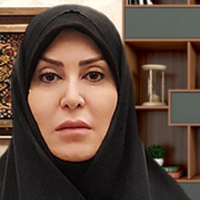Designing an Avatar-based Translator System from Persian into Persian Sign Language (PSL)
Sign Language is a visual language that uses hand shapes, facial expression gestures, and body language for communication. Linguistic studies have shown that Sign Languages, like spoken languages, are natural and meet the communication needs of their speakers. Sign Language is not a single language that can be universal, nor every country has a Sign Language equivalent to its own spoken language. There are many Sign Languages in the world including the American, English, Japanese, Italian, Turkish, and Persian Sign Language. The Persian Sign Language is the natural language of the deaf in Iran. The ability to communicate effectively is an important step in establishing relationships and participation for the deaf in the community. Lack of support from the hearing community leads deaf people to isolation and other social problems. In order to overcome the obstacles that exist between hearing and hearing impaired people, a translator system is needed to translate messages into the Sign Language in accordance with their spoken language. A Sign Language translation system can be used by the deaf, the family and friends of such people, the blind-deaf people, the people who have lost their ability to speak due to some factors, the professors and teachers, the medical staff and also people who are interested in learning this language. This article, by providing an automatic translator system for translating from the Persian Language into the Persian Sign Language, aims to help the deaf in Iran to communicate better.
The proposed translator system requires the use of an architecture in order to convert the Persian text into the Persian Sign Language. Due to the nature of the Persian language as the input language of the translator system and also the problems inherent in the Persian Sign Language as the output language of the translator system, the architecture of the translation systems presented in other languages cannot be presented and developed regarding the Persian language. One of the most important issues in the Persian Sign Language is lack of equivalent signs for some words in the Persian language. In order to overcome these problems, an architecture appropriate to the Persian language and the Persian Sign Language was presented. By using the proposed architecture, the proposed system, receives the Persian text as an input in the form of word or sentence from the user, and after performing the initial processing and by using the lexical transfer module, the system translates the text into the Persian Sign Language. Finally, by using an avatar, the Sign Language form corresponding the input of a word, phrase, or sentence can be represented. For this purpose, transfering the translated words into HamNoSys notation, turning the HamNoSys notation to SiGML language and then animating the 3D character with the help of this language are used.
To evaluate the translation system of the Persian language to the Persian Sign Language, a set of test sentences were used. After evaluating the system, it was found that the proposed system has acceptable efficiency, storage space and speed.
Research in interdisciplinary sciences is only effective and influential when research in all of the sciences involved is done equally and each science solves the challenges of its own field of study. For example, the most important challenge in completing the Persian Sign Language translation system is lack of linguistic research on Persian Sign Language. The proposed translation system is a combination of linguistic, social, and engineering sciences. Focusing on each of these areas and upgrading them will considerably improve the proposed system. However, the proposed system can improve the relationship between the hearing and the hearing impaired people to a great extent. One can focus on any of the proposed architecture modules and upgrade and improve each of them. It is also possible to integrate the section of emotions and facial expressions with the animated character so that the facial expressions of this avatar can change according to the conditions.
-
Improvement of missing vital signs data estimation algorithm in wireless body sensor networks based on deep neural networks
Abolufazl Ebrahimi, *, Morteza Mohajjel
Signal and Data Processing, -
Improving Persian Opinion Mining based on Polarity and Balancing Positive and Negative Keywords (case study: Digikala reviews for mobile)
Mahdieh Vahedipoor, , Abdolreza Rasouli Kenari*
Signal and Data Processing,



